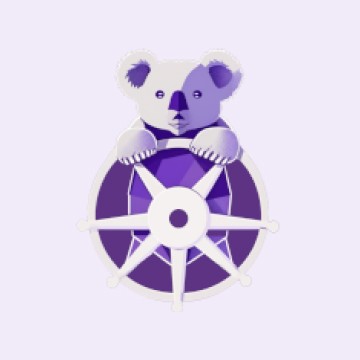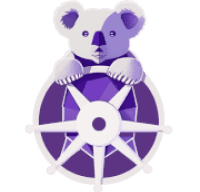Kubernetes
Managing Kubernetes Configurations: App Repo vs. Centralized Repo
Feb 18, 2025
When deploying applications to Kubernetes, managing configuration files efficiently is crucial for maintainability, security, and operational scalability. Two common approaches exist:
Application Repository Configuration – Store all relevant configuration files within the same repository as the application code.
Centralized Configuration Repository – Maintain a dedicated repository for all deployment configurations across multiple services.
KoalaOps supports both approaches, allowing teams to choose the best method based on their architecture and operational needs. In this post, we’ll explore the pros and cons of each method, best use cases, and how to decide which is right for your organization.
Configurations Typically Include
Deployment – Defines how pods and containers are deployed.
Service Definitions – Specifies how services communicate internally and externally.
Environment Variables – Manages per-environment configuration values.
Ingress – Controls external access to services.
Pod Monitoring – Defines observability configurations.
1. Application Repository Configuration
Overview
In this approach, Kubernetes manifests, Helm charts, or Kustomize overlays are stored alongside the application’s source code in the same repository. This keeps configuration tightly coupled with the application lifecycle.
Pros
✅ Simplifies development workflows – Developers can make application and configuration changes in a single pull request. ✅ Easier to manage versioning – Application code and deployment configurations are always in sync. ✅ Ideal for small teams – Streamlined approach reduces operational overhead. ✅ Better CI/CD integration – Pipelines can trigger builds and deployments from a single repository.
Cons
❌ Limited reusability – Configurations cannot be easily shared across multiple applications. ❌ Harder for platform teams to enforce standards – Each team manages its own configurations, leading to inconsistencies. ❌ Security concerns – Embedding secrets or sensitive environment variables in the application repo increases risk.
Best Use Cases
Small to medium teams managing independent services.
Applications with simple Kubernetes configurations.
Teams that want a tightly coupled CI/CD process.
2. Centralized Configuration Repository
Overview
A separate repository from the App’s repo, which stores deployment configurations for all services. Typically used with GitOps tools like ArgoCD, this approach centralizes configuration management while keeping application repositories clean.
Pros
✅ Improves standardization – Platform teams can enforce consistent deployment patterns. ✅ Manage multiple distributions of the same app – With different life cycles and configurations. ✅ Easier cross-service configuration management – Shared configurations across multiple applications. ✅ Better security practices – Centralized control over secrets and access permissions. ✅ Scales better in large organizations – Decouples application development from platform operations.
Cons
❌ Increases operational complexity – Requires managing two repositories (app code + config repo). ❌ Potential for drift between app and config versions – Without proper versioning, misalignment can occur. ❌ More complicated developer workflows – Developers may need to submit changes in two different repositories.
Best Use Cases
Large organizations with multiple teams managing Kubernetes deployments.
Companies using GitOps with tools like ArgoCD or Flux.
Organizations that need strict governance over infrastructure and configuration.
Which Approach Should You Choose?
The choice depends on your team size, operational model, and security requirements:
Team Size
App Repo Config: Best for small to medium teams.
Centralized Repo: Works well for large teams or multiple teams (but can also work well for smaller teams).
Complexity
App Repo Config: Simpler to manage.
Centralized Repo: More scalable but requires extra coordination.
Standardization
App Repo Config: Less enforced; each team manages its own config.
Centralized Repo: Ensures stronger governance and consistency.
Version Syncing
App Repo Config: Code and configuration stay in sync naturally.
Centralized Repo: Needs additional version control measures.
Best for:
App Repo Config: Startups and smaller teams that prioritize simplicity.
How KoalaOps Supports Both Approaches
KoalaOps provides flexible deployment orchestration, allowing teams to manage configurations in the way that best suits their operational needs:
Supports both repo structures – Whether configurations are inside the app repo or a centralized repo, KoalaOps can automate deployment workflows.
Seamless integration with GitOps – KoalaOps works with ArgoCD and other GitOps tools, making centralized config management easier.
Secret management & environment handling – Ensures secure handling of sensitive configurations regardless of repo structure.
Developer self-service capabilities – Allows developers to manage configurations without needing deep Kubernetes expertise.
Conclusion
Both approaches to managing Kubernetes configurations have their advantages and trade-offs. Smaller teams benefit from simplicity by storing configurations in the application repo, while larger teams and enterprises gain better standardization and security with a separated and/or centralized configuration repository.
With KoalaOps, you don’t have to choose one or the other – our platform supports flexible deployment orchestration that works for both models, ensuring efficiency, security, and scalability.









